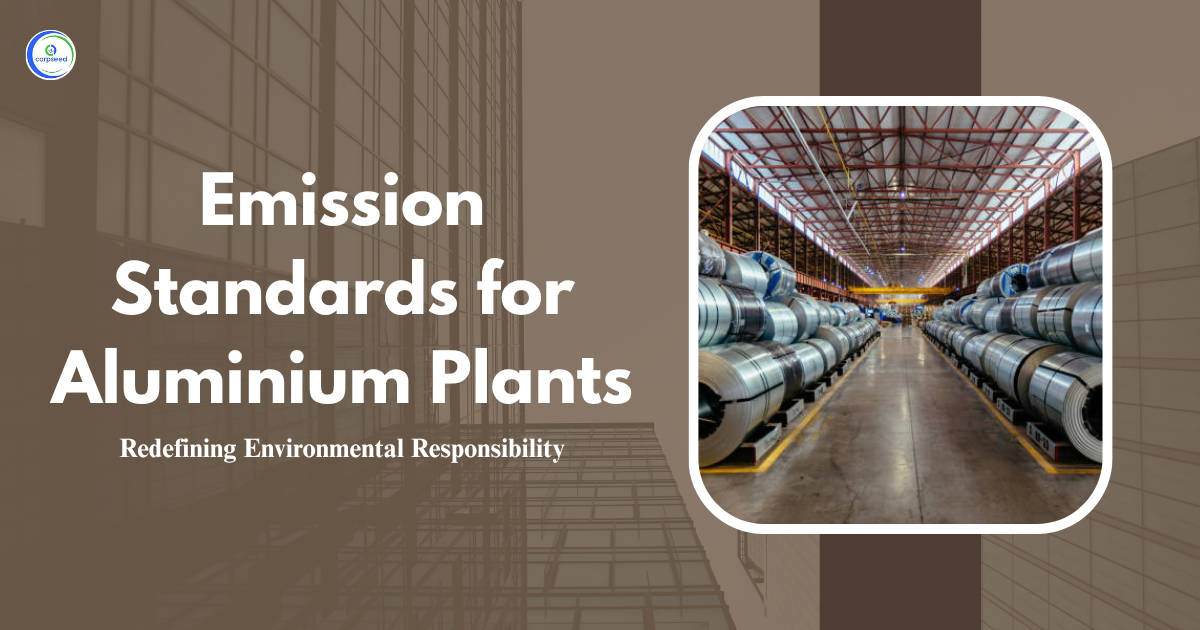Industries are essential for progress for any nation, but they can harm the environment. To ensure environmental safety, governments use a process called Environmental Impact Assessment (EIA) to evaluate projects, like Integrated Coke Oven Plants. These plants produce coke, used in steel-making, but their operations can cause pollution and waste issues. The EIA for Integrated Coke Plant involves an application, expert assessment, public opinions, and recommendations. Various studies help understand environmental impacts and create eco-friendly strategies. The Environmental Management Plan (EMP) guides the project in protecting the environment. Ultimately, the EIA ensures projects like Integrated Coke Oven Plants don't harm the environment while supporting industrial growth.
Table of Contents
--------------Blog Contact Form-------------
Understanding the Integrated Coke Oven Plant
Before diving into the EIA process, it is essential to understand the nature of an integrated coke oven plant. Such a plant is a complex and highly integrated industrial facility primarily engaged in the production of coke. Coke is a vital material used primarily in the iron and steel industry. However, the operations of integrated coke oven plants encompass more than the mere conversion of coal into coke. They also encompass the management of various aspects of coke production, from coal preparation and coking to by product recovery. This level of integration enables these plants to have control over the entire coke production process, ensuring efficiency, quality, and environmental responsibility. Essentially, integrated coke oven plants function as all-encompassing centres for coke production, managing everything from raw materials to the final product within a single organisational framework.
Read Our Blog: What Are The Components Of Environmental Impact Assessment?
Environmental Concerns from an Integrated Coke Oven Plant
Integrated coke oven plants give rise to several environmental concerns due to the nature of their operations, each of which must be carefully addressed-
- Emissions: The coke production process generates emissions, including particulate matter, sulfur compounds, and volatile organic compounds (VOCs). These emissions can contribute to air pollution, posing risks to both the environment and public health.
- Byproducts: These plants produce various byproducts, such as coal tar, ammonia, and benzene. Proper management of these byproducts is essential to prevent environmental contamination.
- Water Usage: Coke oven plants require substantial amounts of water for cooling and processing purposes, leading to high water consumption. If not managed properly, this can result in water pollution and strain on local water resources.
- Waste Generation: Solid waste, such as coke breeze and coke dust, is produced during the coke production process. It is imperative to manage these waste materials effectively to prevent environmental harm and contamination.
Read Our Blog: What Are The Stages Of Environmental Impact Assessment?
Importance of Environmental Impact Assessment for Coke Oven Plant
The Environmental Impact Assessment (EIA) process is incredibly important. It ensures that integrated coke oven plants follow strict environmental rules. The main aim of EIA is to check if these plants might harm the environment and to come up with ideas to make them cleaner. They only give permission for the plant after a very careful EIA process. If the assessment shows that the plant could harm the appropriate environment, they won't allow it to be built. So, EIA helps prevent pollution and is a crucial tool to keep our environment safe and healthy.
EIA Process for Integrated Coke Oven Plants
The EIA process for integrated coke oven plants is a structured and systematic approach designed to evaluate the environmental impact of these industrial facilities. It comprises several stages, each with specific procedures-
- Application Submission
The project proponent initiates the EIA process by submitting an application for Environmental Impact Assessment. This application serves as the foundational document for granting Environmental Clearance. The submitted applications are categorized as per the EIA Notification to streamline the assessment process.
- Scoping of the Industrial Project
The scoping exercise is the next crucial step in the EIA process. It involves identifying and defining the essential aspects of the project, determining what needs to be studied in detail, and setting the parameters for the assessment. This checklist serves as a guide to ensure that all relevant environmental factors are considered during the assessment.
- Appraisal and Grant of Certification
After the project proponent submits the EIA report, and public consultation is conducted, an expert appraisal committee reviews the project in depth. This committee assesses the report and its findings. If the committee is satisfied with the project's environmental impact mitigation measures and compliance with regulations, it may recommend the project for approval to the relevant EIA authority. The state EIA authority considers these recommendations when deciding to grant or reject the application for environmental clearance.
Read Our Blog: What Is The Environmental Impact Assessment Act?
Studies Related to Environmental Impact Assessment of Coke Oven Plants
The Environmental Impact Assessment for integrated coke oven plants is a comprehensive process that involves a range of studies, report generation, and the development of specific plans and strategies. These studies include-
- Terms of Reference (TOR)
Terms of reference is a document which tells about the points that need to be studied during the environmental Impact Assessment. For the Integrated Coke Oven Plants, there are some industry-specific requirements which need to be addressed during the EIA process for Integrated Coke Oven Plants. These studies include justification for selected battery types for the proposed units, proposed layout with demarcated facilities, and plant details including handling, operations and preparation.
- Feasibility Report
The feasibility report is a critical component of the EIA process. It assesses the project's environmental viability, discussing project details such as location, materials, and technology. It also examines the components of the project that may have an impact on the environment and proposes strategies for mitigating any potential environmental concerns.
- Baseline Study
A baseline study is an integral part of the EIA process, focusing on assessing the existing environmental conditions in the project's impact area. This study serves as a "before" snapshot of the area and helps identify environmental aspects and factors that may be affected by the project. By understanding the existing conditions, it becomes possible to gauge the project's potential impact accurately.
- Risk Assessment Study
Safety is a big deal in industries like integrated coke oven plants. We want to prevent accidents and keep both the environment and people safe. So, we do a risk assessment study to understand what might go wrong. This study looks at where the plant is, what it does, and how it might affect the environment. It checks how things work, what could happen, how likely it is, and what it could mean for the area and the people living nearby. This helps us make smart choices to keep everyone safe and protect the environment.
- Environmental Management Plan (EMP)
The Environmental Management Plan (EMP) is like a detailed roadmap for integrated coke oven plants to be eco-friendly and follow the rules. This plan has strategies to avoid hurting the environment, ways to make sure they stick to the environmental rules, and a plan for using resources wisely and on time. It's also ready for any surprises that might come up during the project. So, the EMP is like a master plan to make sure the integrated coke oven plant works responsibly and meets the highest environmental standards.
Read Our Blog: How To Proceed For EIA For The Integrated Paint Industry?
Conclusion
The operation of integrated coke oven plants can harm the environment, but to prevent this and protect nature, governments and regulatory bodies require an Environmental Impact Assessment (EIA) process. This process is well-organized and includes several steps like submitting an application, reviewing the project, getting public opinions, and deciding whether to grant environmental clearance. Various studies, such as feasibility reports, baseline studies, and risk assessments, help understand the environmental impact and propose effective solutions. The heart of the EIA process is the Environmental Management Plan (EMP), which lays out strategies for reducing harm to the environment and ensuring strict adherence to environmental regulations. In the end, the EIA process for integrated coke oven plants is a vital tool to minimise pollution, ensuring responsible and sustainable industrial operations that protect our environment.
This portion of the site is for informational purposes only. The content is not legal advice. The statements and opinions are the expression of author, not corpseed, and have not been evaluated by corpseed for accuracy, completeness, or changes in the law.
BOOK A FREE CONSULTATION
Get help from an experienced legal adviser. Schedule your consultation at a time that works for you and it's absolutely FREE.







_Corpseed.webp)
.webp)
